Digital Art History
The Industrial Period
1789-1930. Records (image, sound, movement) and networks.
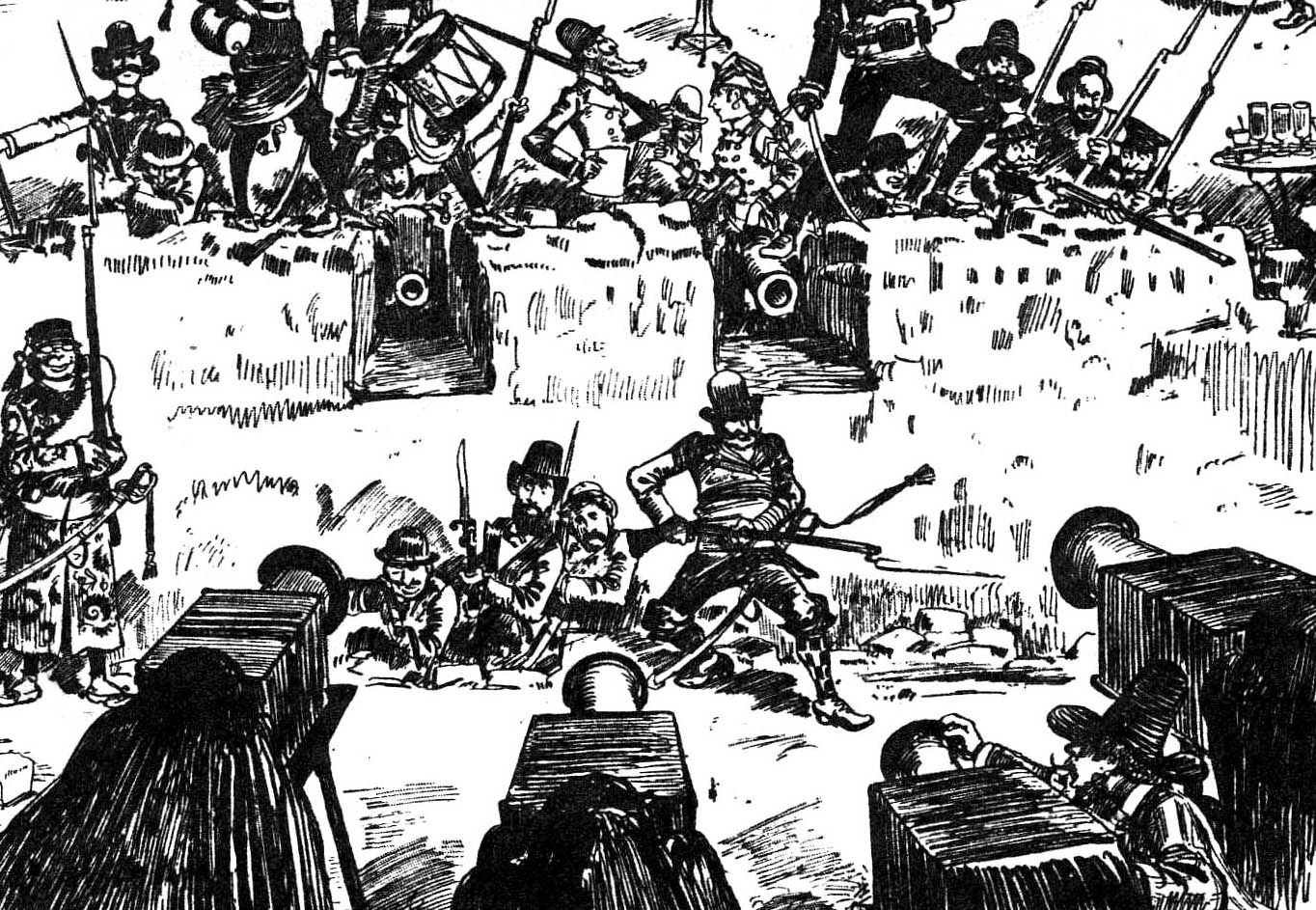
Albert Robida: the Beijing mobs transmitted to Paris (1894).
See The (pre-)digital context. Index of "digital" artists of this period.
Economic expansion frees important budgets for the arts. They can mobilize new technological and theoretical resources. Mechanics and optics keep progressing with regularity, but chemistry and electricity open the way to fundamental innovations, important for digital arts :
- chemistry affords photography ; it is not digital at that time, but for the principle of duplication
- electricity brings three key elements to autonomy : the motor, the incandescent lamp and the communication line (this one digital at start, with the Morse code).
For instance, electric motors provide the pair of automata necessary to recording and reading. Up to the 1950's, the cheap models make do with cranks and springs. But electriciy brings also easiness and regularity :
- for the sound chain : microphone with amplification, motorized engraving of discs, copy and remote transmission, then reading on another electric machine;
- for the cinema chain, combination of chemical processes and motors : shooting, reproducing, projecting.
On the theoretical level, arts enter a new digitization phase, where computation plays a more and more important role. Estelle Thibault [Thibault 2010] calls it "elementarization". Owen Jones witt The Grammar of Ornament (London, 1856), then Charles Blanc, in his Grammaire des arts du dessin (1863) starts a motion whose momentum will stay up to the 1950's. In 1919. The Bauhaus opens new ways to many (if not all) arts.
Some writers and drawers, well informed of scientific progress, foresee the width or opening perspectives. Albert Robida for telecommunications (included television) and Jules Verne for video (3D included, in the Chateau des Carpathes) and for the whole digital world, in his unrecognized (in Europe) work The Day of an American Journalist in 2889. Very early in this period (1818) Mary Shelley publishes Frankenstein, or Modern Prometheus.
In 1851, a great Exhibition in London, "Culture and Industry".
Text and literature
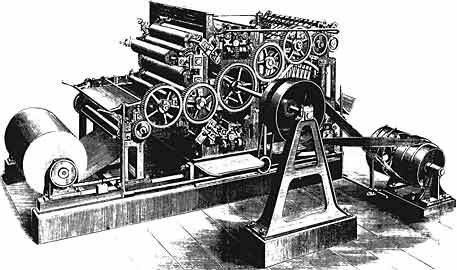
The rotary press (1873) : massive creation of text and images.
Literature, as such, has not much to show on the digital table, but the works of James Joyce. He is considered a forerunner of serialism, in his way to use language, pushed at its maximum in Ulysses (1922). But everybody, including himself, agrees to recognize that this work is practically illegible, whereas it is a must for the shelfs of any good library. Perhaps an exploration of the successive schools of poetry in this time could bring pertinent insights.
A forerunner of text generated from code, Victor Hugo in Jersey spiritualist experiences generate important texts. The methods goes
- Ask a precise question and wait for the answer from strokes from the table's legs.
- One stroke for yes, two for no.
- A number of strokes corresponding to the place of the letter in the alphabet (for instane, eight strokes for J). See Le livre des tables by Victor Hugo (Gallimard, Paris, 2014). But theses experiments remained quite limited and secret. As far as we know, the next experience in such code generation of text will come with Albert Ducrocq in the 1950's.
On the other side, literature, and text in general profits from printing rapid progresses. At the beginning of the 19th century, presses still used the Gutenberg type and the by hand composition from movable lead types. From the 1880's on, that changes :
- presses use electric motors, up to the powerful rotary machines for press,
- composition use sophisticated machines (monotype and linotype, see [Seyl, 1926]), controlled from a keyboard.
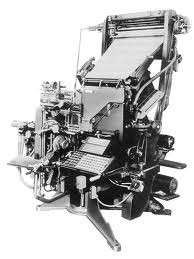
The Linotype (1885) : lower the costs and delays of text acquisition.
The typewriter was born in this period (Remington, 1873, but after many other realizations). It will not become the basic tool of wriers before the mid 20thcentury (and even then, not for everybody). It remains to be seen if it had any influence on content and style. The same question remains open with the 20th century text processing.
In depth, but the consequences for art will show only later, language is analyzed in binary oppositions by the works of Ferdinand de Saussure (Wikipedia).
- Some wrting automata, using cam shafts, have been built in the 19th century (Jaquet-Droz). It works only for very short texs.
Music
Music enhances its resources, beginning with new instruments : the today piano, the brass of Adolph Sax. A piano is enough for Chopin to move our hearts, and wide orchestrations give ampleness to the Romantics. The organ now uses electricity, first for the bellows, later for command.
In 1853, a sort of "electric harmonica" is imagined by Th. du Moncel in his "Exposé des applications de l'électricité". He quotes a Mr. Reiss and Elisha Gray for simiar and posterior ideas (MONCEL Th. du : Le téléphone, le microphone et le phonographe. Hachette 1878). And he says that a possible advantage would have been the possibiity to play from a distance;
The century finds its peak, we could say even its cathedral, with Richard Wagner . He develops a total art (Gesamtkunswerk) from the voices to an enormous machinery, in a space specially built for it. To adapt a formula of Antoine Ficon about post-modern architecture, Wagnerian art extends from tectonices (the large time structures and semantic of the Tetralogy) up to the core of the material. His orchestration, indeed combines different instruments to create new timbers. On this way, Wagner foretells the synthesizer concept, and for our modern ears, and his works sometimrs evoke it, with global timbers that we cannot link to a traditional string or wind.

Richard Wagner deepens the synthetic aspects of Gesamtkunskwer (total art), down to the theater hall design in Bayreuth.
We can even see there a true object oriented programming, where each character is endowed with its proper thema, both melody and timbre. Nealry a programming, anyway, since Wagner would have said, some time before finishing the writing of a score : from the point I reached, anybody could finish the work". And the singers must accept precise constraints, demanding the to express in detail the authors will, words as well as music.
In the late 19th century, new formalisms tend to replace the classical harmony. Jules Verne (in The Day of an American Journalist in 2889) evokes the algorithmic music : "... what a charm he found in the works of our greatest masters, based, as everybody knows, on a series of delicious harmonico-algebraic formulae! ". Schönberg will give it a concrete expression in its docecaphonism (see [Ross 2007 as a reference book on these topics), followed by Alan Berg and others.
Combinatorial games similar to those of Kirchner and Mozart are used by Clinton J. Game of cards to compose quadrilles (music). Scriabine attemps even to combine music and light performance
Efforts tend to lower the costs of score creation [Beaudoire, 1891], using a fragmentation of musical types à la Gutenberg. As far as we know, the results are limited. But this attempt is typical of the analytical ambitions of the time.
At the end of the period, appear the first electronic instruments. At first they are rather analog in their concept: dynamophone of Cahill Thaddeus and the Theremin (1920). Then Martenot waves (1928) bring the real ancestor of the today's synthesizer, properly structured digitally and featuring a keyboard. Several musicians use them: André Jolivet and Arnold Schoenberg for instance. On a similar line, Friedrich Trautwein (Wikipedia) proposes, about 1929), his Trautonium: a monophonic electronic instrument.

3D projection in the Château des Carpathes, by Jules Verne
Painting, photography, kinetic art
Painting, sculpture and even architecture had reached summits of complexity (high definition and image size, would we say today), with the very large canvasses of David or the completion of Versailles. A kind of fragmentation is initiated by Ingres [Goetz, 2006]. But, globally, painting was unable to progress further and was drowning in "pompier" academism.
Photography, invented by Niepce and Daguerre (1826, 1840...) is to change the whole graphic world. Pre-digital developments take place. Fragmentation/assembly is experimented by compositing (or matte painting, could we say today): in 1857, the Swedish Oscar Rejlander combines some thirty negatives to compose a wide scene with multiple characters, The two ways of life, similar to the "grand genre" of historical painting. [Brinkmann, 1999]. By this time, photography is very far from the purism of a Cartier-Bresson (no touching up, no cropping). On the contrary, people pose in front of a (sometimes) elaborated set, and photographs make ample touch up, without of course the easiness of todays software. In a more modern way, Man Ray makes various attempts of more or less abstract composition.
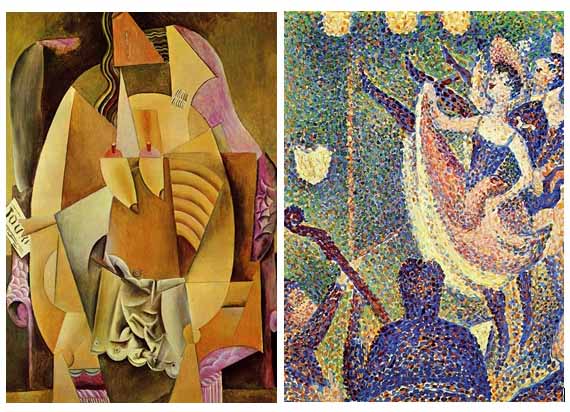
Cubism and pointillism, two ways of preparing vectorial and raster digitization digitization...
So photography ruins the tradition markets of painting (landscapes and portraits). Then painters have to break new grounds. By the end of the industrial period, painting dives deeper in cutting: after the impressionist touch (1860's), the pointillism of Seurat foretells the pixelization [Kemp, 1960], the mosaics of Klimt or the "parallelism principle" of Ferdinand Hodler. But they have to fight against the academic domination. Then new spaces are opened : "Salon des refusés" (1863) and later "Salon des Incohérents" (1882-1896).
Deeper still, Cubism is unexpectedly born in 1906, with the Picasso's Demoiselles. Now, space itself is deconstructed out of its natural perspective and synthetically rebuilt. But this move will itself reach rapidly its limits, notably because the cubists (but for Juan Gris) lack scientific education and could not enter in the ways or algorithmic or generative art. ([Assouline, 1998], [Housez, 2006]). Fernand Léger uses the traditional painting medium, but focuses on images of machines and uses new methods of fragmentation/composition to represent them (see Esthétique et invention du futur, by Roger Garaudy, Paris, UGE 1971).
I n 1844, images are automatically produced by the Harmonograph of the mathematician Hugh Blackburn. The machine associates two pendulums to control a pencil which translates their oscillations on paper. On his website, the computer professional Jean-François Bouzereau shows a simulation of it (with real time operation on random parameters). But, by that time, as for the Kircher machines earlier, its more than else an entertainment. Other experiments are mainly derisive, such as Boronali, "the painting donkey", which creates graphics with a brush tied to its tail.
The mathematician Bruno Abakanowicz invented the spirograph between 1881 and 1900. See a pleasant interactive visualization in Nathan Friend.
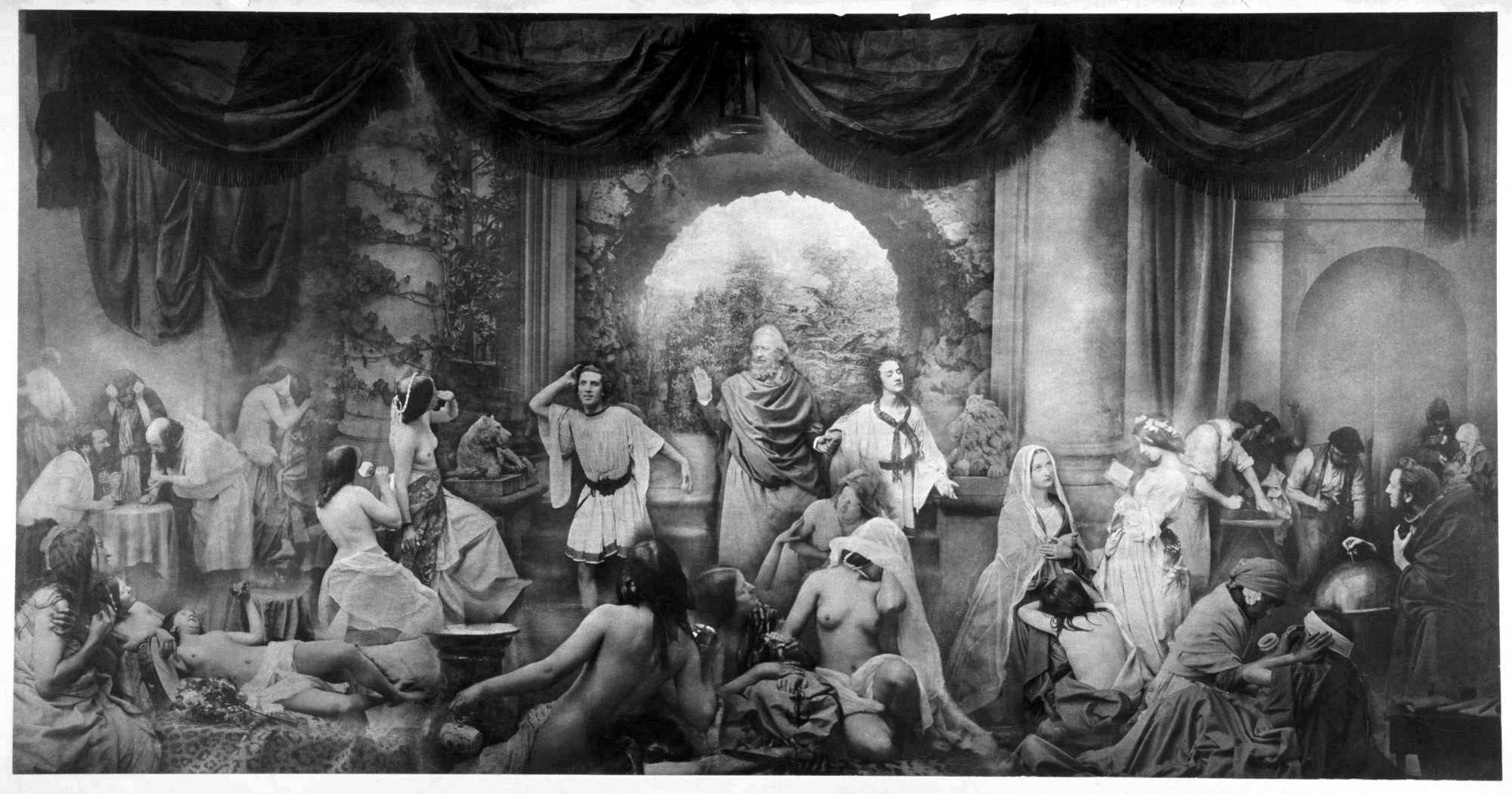
"The two ways", an early photographic collage by Rejlander (from the website of Andy Cox).
Several authors try to generate paintings from music (for instance with color organs) : Wladimir Baranoff-Rossiné, Raoul Haussmann or Bainbridge Bishop.
The war does not prevents artistic activities to progress. The post-war years, and the "années folles" will bring fascinating developments. Art becomes modern, as it concretizes the possiblities and hopes of a great synthesis of reason and faith, of material expansion and spiritual development. Science and technologies play here there part as infrastructure. Painters, from Montparnasse to Montmartre, take pleasure in all the decensions of the term, in a Paris which leads the Wordl's art. They frequently engage in political totalitarian regimes, be they fascist (the Futurists in Italy) or communist (socialist realism). Sometimes fascinated by machines (Futurists, Fernand Léger), they are more frequently critical (Dada in Switzerland then in France, Grosch in Germany), then search themselves in surrealism.
Others go into kinetic art, like Duchamp Marcel and Naum Gabo. And here we are on the borders of cinema.
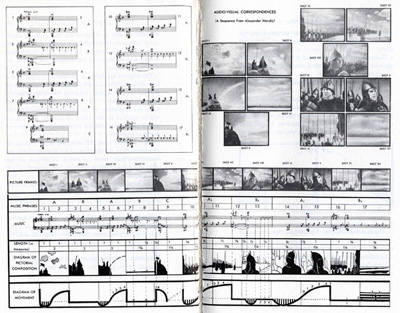
For Eisensteing, montage is central to film makin as an art. A form of fragmentation and programming which annouces generative art( (Document from Rasa website.
Cinema and animation
Technically, cinema is based on a fragmentation of the 4D (3D + time) reality into a succession of frames (2D, or 3D with stereoscopy).
The continuity of time is then recreated by the retinian remanence. In 1824 Peter Mark Roget publishes Persistence of Vision (information found on Harvey Goldman website). It is used on the phenakitiscope of Plateau (1832) for drawings and from the snapshots of Muybridge and Marey for photography. It becomes operational with the films of Thomas Edison and his assistant W.K.LC Dickinson (1893) the Lumière brothers (1895).
Such cutting, technically required, and similar to the human vision, will induce Bergson [Bergson, 1907] to talk about the cinematographic illusion.
A more artistic level of fragmentation/composition is reached in cinema with the cut/montage system. Méliès is the first to practice it with his "stop trick" (1895). The theory will be developed and widely applied by
Eisenstein. [Deleuze, 1983] elaborates on this topic, but (we think), in a far less convincing way than Eisenstein. This level is generally not considered as digital proper. But this fragmentation process will find a properly digital development with the general practice of remix (let's say around 2000) or the automated-cominbatorial montage work Metacrane (2009) by Thomas Israel.
A deeper algorithmic/digital design and making of films tends to animation, with works by Emile Cohl (1908), Leopold Survage (Colored Rhythms, 1912), Man Ray (Return to Reason, 1923) and with greater power by Oscar Fishinger, who inspired parts of the film Fantasia (Disney, 1940).
Objects, sculpture, architecture
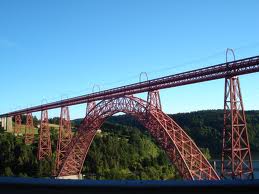
Viaduct of Garabit, by Eiffel, 1884.
Objects: kinetic and light art and new architecture
Artists make use of light and motor in first forms of kinetic art (the term will be forged in the 1950's).Popper writes, in Ecrire sur l'art [Popper 2007] writes (our translation) : " I have tried to retrace the uses of virtual movemnet as plastic element by generations of artists from around 1860, which corresponds to the impressionists up to the birth of kinetic art, around 1930, that is when artists as Tatlin, Gabo, Rodchenco and even Duchamp and Man Ray, have used the real movement as creative principle. It was at first made possible by optical processes which afforded the spectator to fell this "virtual" movement, then by the introduction of an actual or "real" movement in the work". Light art is practiced notably by Edward Craig.
In architecture, concrete and metal chemistry and computation (strength of materials, descriptive geometry) afford a strong expansion of civil engineering. Railways run through Europa, with many works of engineering, of which some have a powerful aesthetic aura (the Garabit viaduct, among a lot).
In parallel, greater attention is paid to historical monuments, their protection and restoration. Elementarization is inspired by language : grammar (Grammaire des arts du dessin, by Charles Blanc, 1983) and dictionary (Dictionnaire de l'architecture, by Viollet-le-Duc, 1854-1858). These generative tools afford Viollet-le-Duc to restaure ancient monuments, sometimes in a manner more conform to his ideas than to their original state, and even to build a somehow synthetic medieval castle, as in Pierrefonds.
But the new technologies bring also radically new forms, simple and functional. Their dryness is compensated by ornaments. See for instance, in Paris, the Grand Palais or the elevated parts of Metro, and in the USA, the skyscrapers ornamentation. More deeply innovative, Antoni Gaudi Antoni starts from mathematical bases to design La Sagrada Familia in Barcelona.
Theater and performance
Vsevolod Meyerhold installs a screen above the stage, Adolphe Appia present light shows and (1863) John Popper adapts Henry Dirck's idea of simulating an apparition through lighting and glass panels for on state special effet. (Indicated by [Debatty]).
Not digital, but digitally recreated by Jean-Paul Favand in the 2010's, complex semi-automated shows are presented in itinerant spectacles. See our post on his Virtualia presentation in Enghien-les-Bains.
See for instance L'envers du décor, edited by Catherine Join-Diéterle. Co-publishers Gourcuff Gradenigo and CNRS, Paris, 2012.
DICCAN'S PARTNERS:
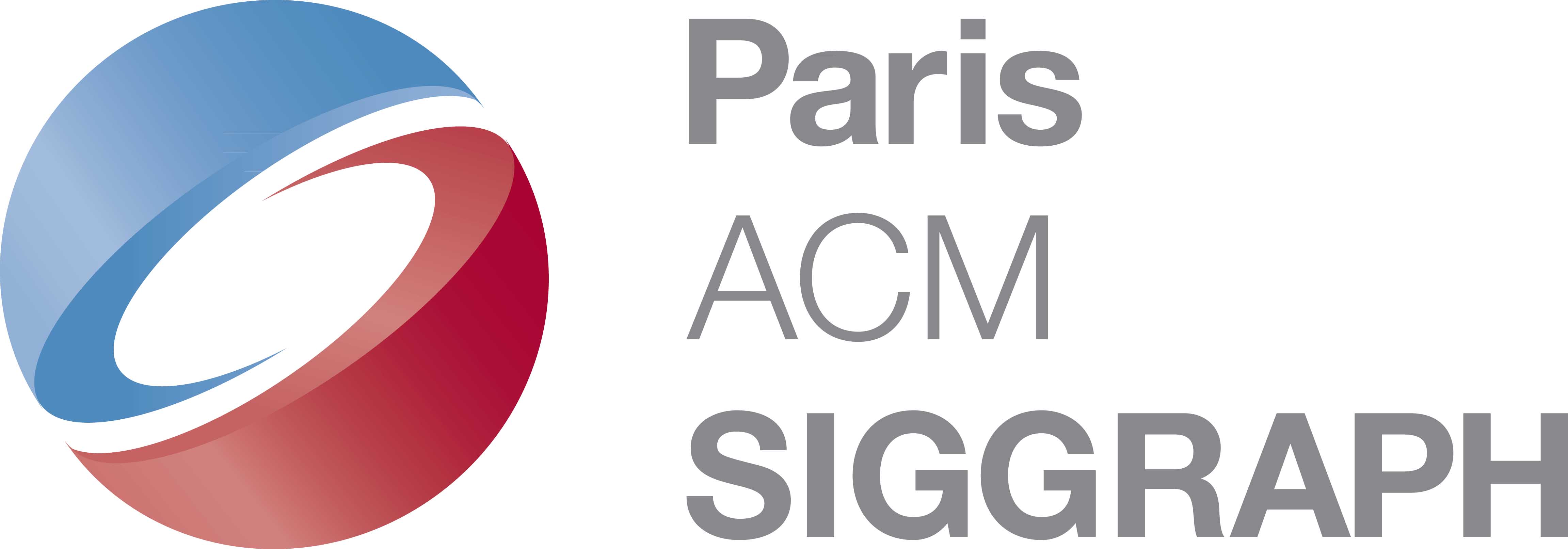
Paris ACM Siggraph, the French chapter of ACM Siggraph, worldwide non-profit organization of computer graphics.

Les Algoristes, an association of artists using their own algorithms in their work.
